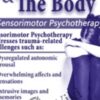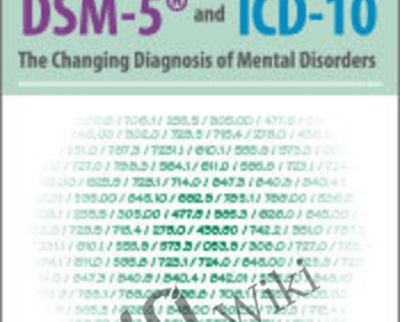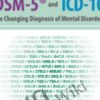$199.99 Original price was: $199.99.$75.00Current price is: $75.00.
6 Hours 20 Minutes
The DSM-5® manual, released in May 2013, requires substantial changes in the classification and diagnosis of mental disorders. These changes reflect the explosion of new information in psychopathology, neuroscience, and treatment over the past 15 years plus the need for a stronger link to the International Classification of Diseases (ICD).
 Purchase this course you will earn 75 Points worth of $7.50
Purchase this course you will earn 75 Points worth of $7.50Elevate your skills with the Using the DSM-5® and ICD-10: The Changing Diagnosis of Mental Disorders – Margaret L. Bloom course, available for just $199.99 Original price was: $199.99.$75.00Current price is: $75.00. on Utralist.com! Browse our curated selection of over 60,000 downloadable digital courses across diverse Uncategorized. Benefit from expert-led, self-paced instruction and save over 80%. Start learning smarter today!
Finally! Resources that will help you navigate the changing diagnosis of mental disorders.
- How to switch easily to the ICD-10 codes for mental disorders
- Update on major changes in diagnosis of childhood and adolescent disorders
- Reporting DSM-5® diagnoses now that Axis I and the Global Assessment of Functioning (GAF) score are gone
- Important neuroscience discoveries that shape DSM-5® diagnoses
The DSM-5® manual, released in May 2013, requires substantial changes in the classification and diagnosis of mental disorders. These changes reflect the explosion of new information in psychopathology, neuroscience, and treatment over the past 15 years plus the need for a stronger link to the International Classification of Diseases (ICD).
This information-packed recording specifically emphasizes changes from the DSM-IV® to DSM-5®. You will walk through the DSM-5® manual and highlight the revisions, new diagnoses, and new specifiers that are most relevant to your daily practice. Information about the ICD-10, designated to be HIPAA’s official code book for mental disorders in 2015 will also be integrated throughout. Case examples and case studies will help you transition from making DSM-IV® multi-axial diagnoses (Axis I-V) to effective diagnosis with the DSM-5® and ICD-10 coding systems without axis.
- Identify the major revisions in DSM-5® to substance, mood, anxiety, and other common categories of mental disorders.
- Describe five changes in the organization of mental disorder categories in the DSM-5®.
- Discuss the diagnostic criteria for six or more new diagnoses in the DSM-5®.
- Describe the ICD and its relationship to the DSM-5® in classifying mental disorders.
- Convert a DSM-IV-TR® Axis I diagnosis (name, code, and specifiers) to a DSM-5® diagnosis (name, code, and specifiers) and apply an ICD-10 code.
- Utilize the DSM-5® criteria to diagnose clients in case studies during the workshop.
Get Using the DSM-5® and ICD-10: The Changing Diagnosis of Mental Disorders of author Margaret L. Bloom only price 79$
Organization & Structure
Development of the DSM-5®
- Rationale for a new version
- Work group goals for improving the DSM®
- Summary of the areas of controversy
Changes in the Organization of the DSM-5®
- New Definition of Mental Disorder
- Eliminating the axis
- Life-Span approach in all mental disorders
- Mental disorders as dimensional and categorical
- Don’t forget the Appendix!
Alignment with the ICD-10
- ICD-10 Codes for Mental Disorders
- How clinicians use the ICD-10
Changes in Major Mental Disorders
Neurocognitive Disorders
- Major Neurocognitive Disorder
- What happened to Dementia?
- Alzheimer’s Disorder
- Mild Neurocognitive Disorder
- Mild Traumatic Brain Injury
Neurodevelopmental Disorders
- Autism Spectrum Disorder
- Only disorder with tightened criteria
- What happened to Asperger’s?
- Social Communication Disorder
- The ever-changing ADHD
- Intellectual Development Disorder
The Schizophrenia Spectrum and Other Psychotic Disorders
- Schizophrenia
- What happened to the subtypes?
- Delinking catatonia
- Revised Schizoaffective Disorder
- Schizophrenia video case and discussion
Two Mood Disorders Categories
- Depressive Disorders
- Removal of the bereavement criteria
- Changes to criteria
- Bipolar and related disorders
- Disruptive Mood Deregulation Disorder
- Clarifying Bipolar I and II
- Video clips of mood symptoms and discussion
Three Anxiety Related Categories
- Anxiety Disorders: What is left?
- Obsessive-Compulsive and related disorders
- Hoarding Disorder
- Trauma and Stress related disorders
- Posttraumatic Stress Disorder changes
- Adjustment disorders
- Client Case Activity: GAD and PTSD
Substance Use and Addictive Disorders
- Dropping abuse and dependence
- Changes for various substance use disorders
- Gambling addiction
- Prescription drugs and addiction
Reformulated Disorders of Behavior
Feeding and Eating Disorders
- New Binge Eating Disorder
- New Avoidant/Restrictive Food Intake Disorder
- Changes to Anorexia and Bulimia Nervosa
- Feeding disorders across the life-span
Disruptive, Impulse Control, and Conduct Disorders
- Oppositional Defiant Disorder
- Conduct Disorder
- Intermittent Explosive Disorder
DSM-5® and the ICD-10
Coding Protocol from the DSM-IV® to DSM-5®
Using the ICD-10 Classification
Case Study of conversion from a DSM-IV® diagnosis
Get Using the DSM-5® and ICD-10: The Changing Diagnosis of Mental Disorders of author Margaret L. Bloom only price 79$
Tag: Using the DSM-5® and ICD-10: The Changing Diagnosis of Mental Disorders – Margaret L. Bloom Review. Using the DSM-5® and ICD-10: The Changing Diagnosis of Mental Disorders – Margaret L. Bloom download. Using the DSM-5® and ICD-10: The Changing Diagnosis of Mental Disorders – Margaret L. Bloom discount.
Cultivate continuous growth with the Using the DSM-5® and ICD-10: The Changing Diagnosis of Mental Disorders – Margaret L. Bloom course at Utralist.com! Unlock lifetime access to premium digital content, meticulously designed for both career advancement and personal enrichment.
- Lifetime Access: Enjoy limitless access to your purchased courses.
- Exceptional Value: Benefit from savings up to 80% on high-quality courses.
- Secure Transactions: Your payments are always safe and protected.
- Practical Application: Gain real-world skills applicable to your goals.
- Instant Accessibility: Begin your learning journey immediately after buying.
- Device Compatible: Access your courses seamlessly on any device.
Transform your potential with Utralist.com!
Related products
Uncategorized
= 35 Points
= 125 Points
Uncategorized
= 85 Points
Uncategorized
Legal Risks in Nursing Documentation – Use Extreme Caution When Skimming the Facts – Rosale Lobo
= 40 Points
Uncategorized
= 35 Points
= 85 Points
= 94 Points
Uncategorized
= 35 Points





